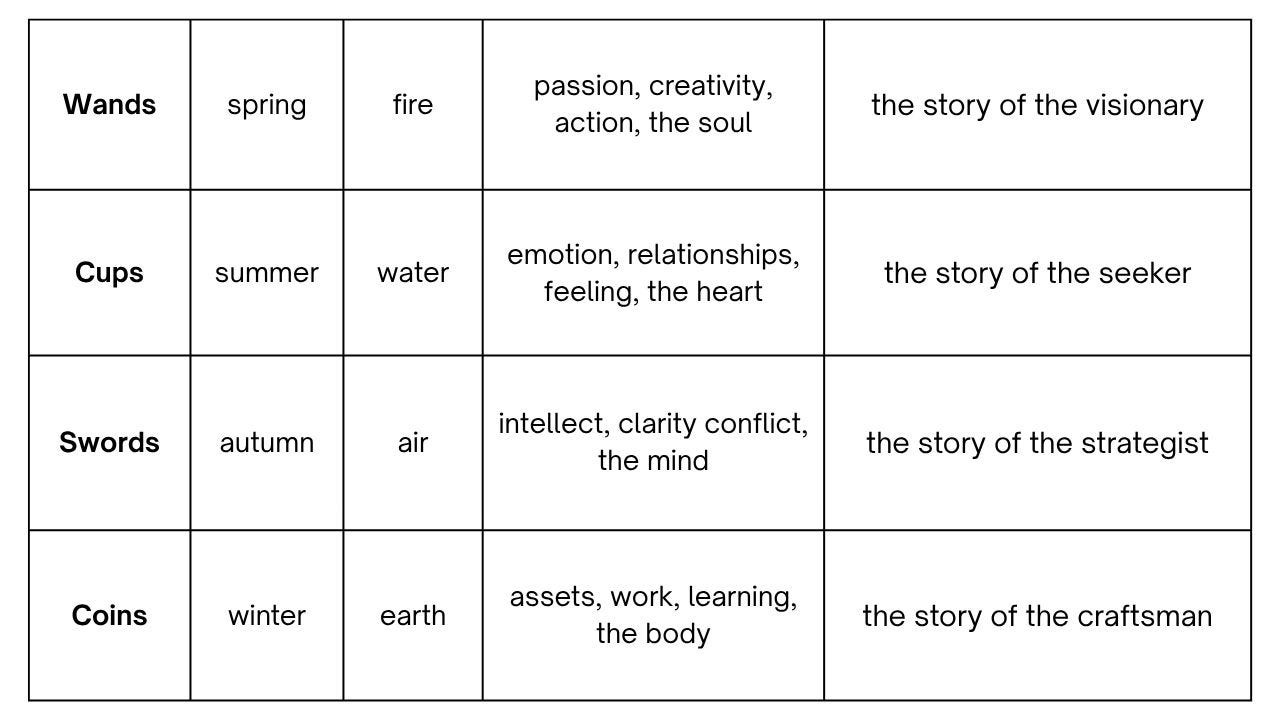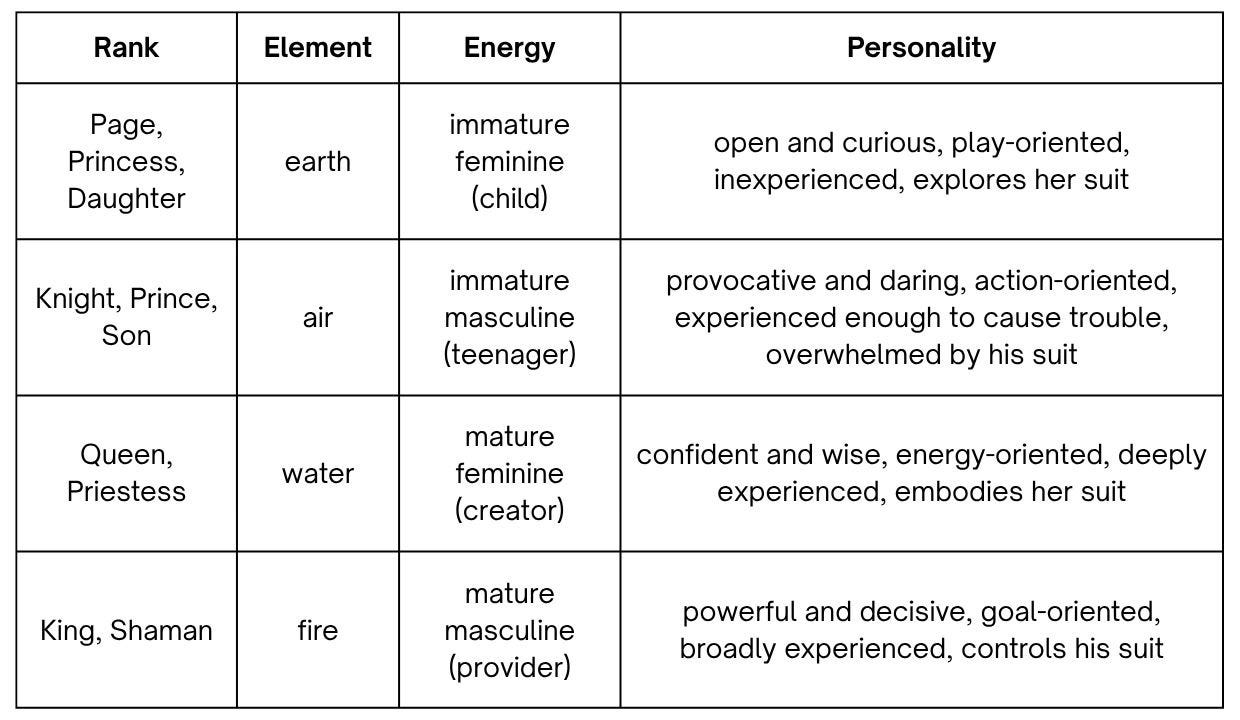Meet the Court — Introduction
use the elemental structure of the court cards to learn tarot easily
Welcome back! Over the last five posts, we’ve covered the numerical structure of the minor arcana. Check that out here. Today, we’re starting with a short introduction to the court cards. These are the Page, Knight, Queen, and King of each suit. As with the minor arcana, we are going to be using a structural approach. On one axis is the suit, and on the other is the rank or station of each card. There are aspects that all the Knights have in common, for example, and others that all the Kings share. Knowing the suit and station of a card will help you assess the meanings of cards on the fly.
I feel that, of all the cards in the tarot, the court cards are the least forthcoming on the surface. However, spending just a little time with them opens up a rich array of interpretations very quickly. These characters reward effort and curiosity. They are not broad symbols like the major arcana, nor are they story arcs like the minor arcana. Instead, the court cards are stock characters. As you work with them, you will make up the details of their personalities. It’s helpful to relate them to people or characters you know, or aspects of yourself. Treat these cards like dolls. Get them out, dress them up, and imagine how they would talk to each other!
In a reading, the court cards represent real people, or aspects of real people. These can be friends, family members, coworkers, political figures, fictional or historical characters, or parts of yourself. But they are people. Since stories are generally people-oriented, court cards can act as anchors in a tarot spread. If you find yourself lost during a reading, looking at the placement of any court cards can help you gain your bearings. Then, the other cards in the spread can be seen in relation to these characters, adding action and meaning.
In the interest of legibility, this series will start with an introduction to the ranks, where the Pages are grouped together, then the Knights, etc. After that, there will be a post organizing by suit instead of rank, which will use the same decks as the minor arcana series for each suit. This is for continuity and use as a quick reference. Some people will find it easier to relate to court cards through their suits, and others will discover that ranks work better for them. After those posts, I’ll talk about my preferred ways to relate to the court cards as characters, including games for getting to know them better.
The Suits
First, recall the meanings of the suits:
Picture each character in a literal court. What would the throne room of the Swords feel like? How would it be different than the throne room of the Cups? Then, think about the suits as families, with Page and Knight as Sister and Brother, and Queen and King as Mom and Dad. How is their dining room decorated? Would the family bicker over dinner? What about? How would they divide chores?
Do you know of any families, businesses, or people that approach things in a particularly Sword-like way? Which of your friends most embodies the suit of Coins? What element do your parent(s) most exemplify? What about your sibling(s)? The court cards are fixed in the context of their court, and developing a clear mental image of that territory is key.
The Ranks
Now, think about the ranks and consider how the energy of the different suits might manifest in each person.
Don’t get hung up on gender and age here. The tarot uses divisions like young and old, or masculine and feminine, as universally understood symbols. You might meet the King of Wands in a teenage girl, or the Page of Swords in a middle-aged man. These dichotomies, like the elemental and numerical structure of the tarot, exist as guides to support personal interpretations. You needn’t treat them as hard rules. on the contrary, I encourage you to subvert this structure whenever it suits you.
We’ll start with the specific ranks next week. In the meantime, think about how age, experience, and orientation change the way a person expresses their inner nature. Look for the energy of these suits in the people and characters you encounter. Think about how an immature boy might approach things differently than a mature woman, even if both were focused on the same general area of life.





